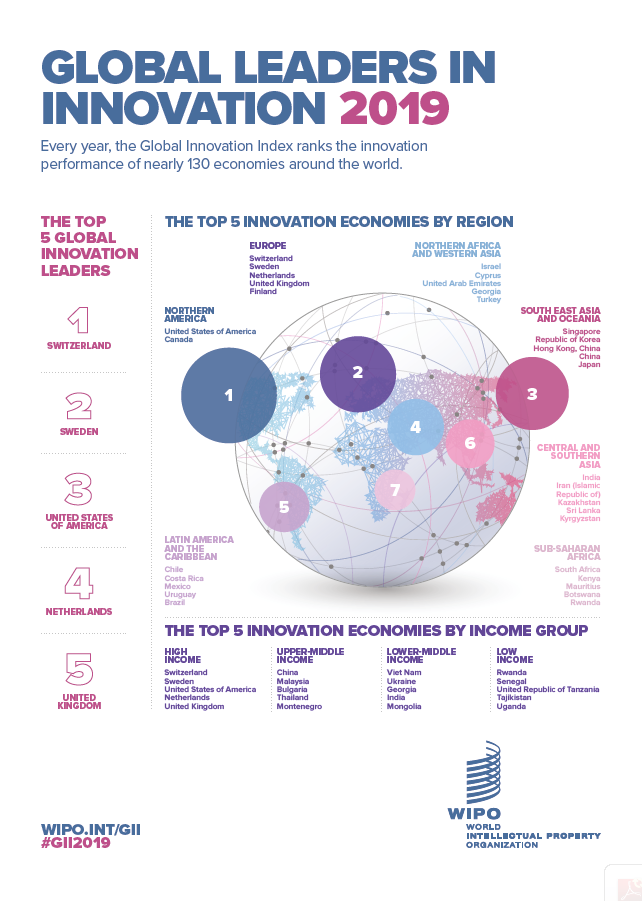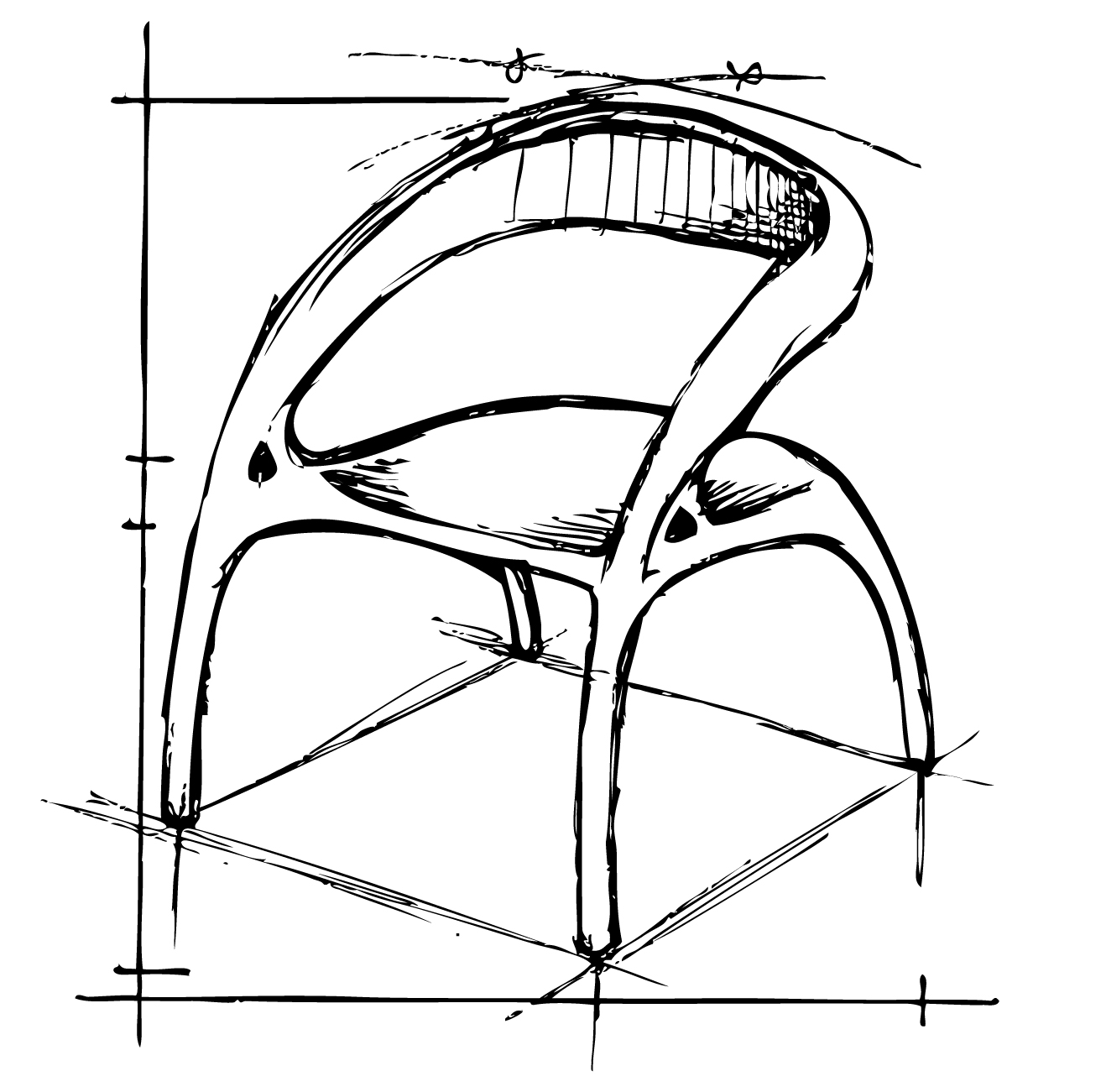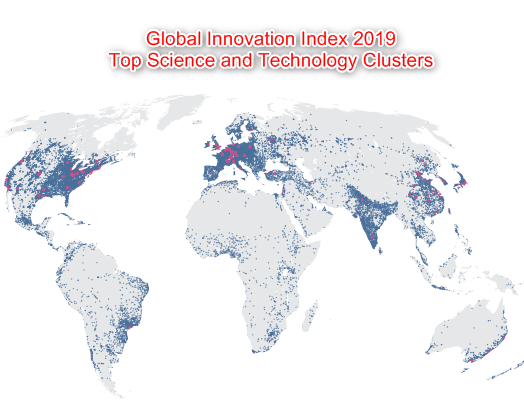
05
Sep
2019
The Global Innovation Index and its relationship with economic growth
Innovative activity is without doubt one of the drivers of economic and social development. This is assuredly the reason why the Global Innovation Index report, published annually by WIPO, has become a global benchmark that helps legislators better understand how to stimulate and measure innovative activity and its impact on economic growth and development.
The Global Innovation Index 2019, co-published by WIPO, Cornell University and INSEAD, ranks the results of innovation in almost 130 countries and economies in different regions of the world based on some 80 indicators. These indicators include a measurement of investment in R&D, the number of patent and trademark applications, and the growth of high-tech exports, among others.
According to the latest report, just published, Switzerland is the most innovative country in the world, followed by Sweden, the United States of America, the Netherlands, and the United Kingdom. Economic drivers such as China and India are climbing the rankings thanks to the introduction of government innovation policies. In this study, India, South Africa, Chile, Israel, and Singapore stand out as regional leaders and China, Vietnam, and Rwanda lead their respective income groups.
Here are the main conclusions of the study:
• Innovation is flourishing, both in developed and developing economies, despite the global economic slowdown.
• Global public investment has grown by 5% and private investment by 6.7% since 2011.
• The geography of innovation is changing with the rise of some middle-income economies
• There is still a "glass ceiling" dividing middle and high income economies. China is the country most consistently striving to break through that barrier, followed, to a lesser extent, by India, Brazil, and the Russian Federation.
• There is also a gap in the effectiveness of economies in translating innovation resources into results.
• Moving from quantity to quality in the area of innovation remains a priority.
• The science and technology hubs are mainly located in the United States, China, and Germany, although emerging economies, such as Brazil, India, Iran, the Russian Federation, and Turkey, are found in the top 100.
Influence of medical innovation on the future of healthcare
This year's report also extensively explores (Chapters 2 through 17) the way in which medical, technological, and non-technological innovation will transform healthcare worldwide. It describes artificial intelligence, genomics, and mobile applications for health as areas that will change the way medical care is provided in the rich and developing nations.
The following five concepts are discussed:
• Sustainable economic growth and the overall quality of people's lives require affordable, high quality healthcare. Although significant progress has been made, there are still many gaps in access to healthcare for certain sectors of the world's population.
• Medical innovations, both in pharmaceutical products and medical technology, are essential for closing the gap in the provision of services worldwide. It is essential to remove the obstacles in the way of medical innovation and its dissemination.
• The new digital technologies are bringing innovation in the healthcare sector to non-technological sectors, such as the reorganization of business models and new processes, integration, and data management throughout the ecosystem.
• The emerging markets have a unique opportunity to take advantage of medical innovations and to invest in new models of health service delivery that match those in the more developed markets.
• It is essential to ensure that there continues to be sufficient funding for this field, especially public sector research, as this will pave the way for innovation to speed up the time to user availability, bring innovations to the field of preventive health, and support new technologies that focus on collecting, managing, and sharing data efficiently and securely.
If this summary has piqued your curiosity, you can access the complete report by downloading it from the WIPO website.
Source: WIPO - Global Innovation Index 2019
The Global Innovation Index 2019, co-published by WIPO, Cornell University and INSEAD, ranks the results of innovation in almost 130 countries and economies in different regions of the world based on some 80 indicators. These indicators include a measurement of investment in R&D, the number of patent and trademark applications, and the growth of high-tech exports, among others.
According to the latest report, just published, Switzerland is the most innovative country in the world, followed by Sweden, the United States of America, the Netherlands, and the United Kingdom. Economic drivers such as China and India are climbing the rankings thanks to the introduction of government innovation policies. In this study, India, South Africa, Chile, Israel, and Singapore stand out as regional leaders and China, Vietnam, and Rwanda lead their respective income groups.
Here are the main conclusions of the study:
• Innovation is flourishing, both in developed and developing economies, despite the global economic slowdown.
• Global public investment has grown by 5% and private investment by 6.7% since 2011.
• The geography of innovation is changing with the rise of some middle-income economies
• There is still a "glass ceiling" dividing middle and high income economies. China is the country most consistently striving to break through that barrier, followed, to a lesser extent, by India, Brazil, and the Russian Federation.
• There is also a gap in the effectiveness of economies in translating innovation resources into results.
• Moving from quantity to quality in the area of innovation remains a priority.
• The science and technology hubs are mainly located in the United States, China, and Germany, although emerging economies, such as Brazil, India, Iran, the Russian Federation, and Turkey, are found in the top 100.
Influence of medical innovation on the future of healthcare
This year's report also extensively explores (Chapters 2 through 17) the way in which medical, technological, and non-technological innovation will transform healthcare worldwide. It describes artificial intelligence, genomics, and mobile applications for health as areas that will change the way medical care is provided in the rich and developing nations.
The following five concepts are discussed:
• Sustainable economic growth and the overall quality of people's lives require affordable, high quality healthcare. Although significant progress has been made, there are still many gaps in access to healthcare for certain sectors of the world's population.
• Medical innovations, both in pharmaceutical products and medical technology, are essential for closing the gap in the provision of services worldwide. It is essential to remove the obstacles in the way of medical innovation and its dissemination.
• The new digital technologies are bringing innovation in the healthcare sector to non-technological sectors, such as the reorganization of business models and new processes, integration, and data management throughout the ecosystem.
• The emerging markets have a unique opportunity to take advantage of medical innovations and to invest in new models of health service delivery that match those in the more developed markets.
• It is essential to ensure that there continues to be sufficient funding for this field, especially public sector research, as this will pave the way for innovation to speed up the time to user availability, bring innovations to the field of preventive health, and support new technologies that focus on collecting, managing, and sharing data efficiently and securely.
If this summary has piqued your curiosity, you can access the complete report by downloading it from the WIPO website.
Source: WIPO - Global Innovation Index 2019












